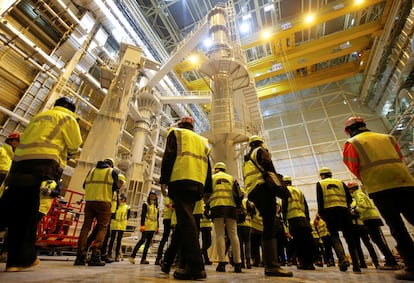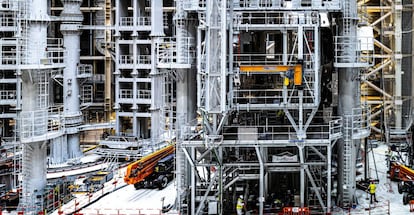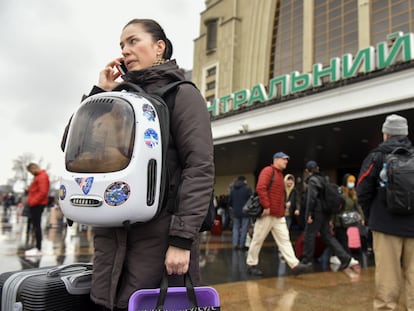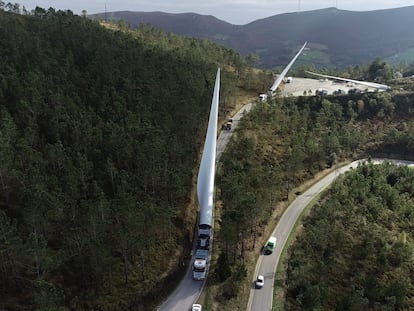Is the dream of clean and unlimited nuclear fusion energy finally within reach?
The old joke is that this technology is always 30 years away. Yet it’s no laughing matter for the researchers building ITER, the world’s largest related experiment

The Sun has fueled life on Earth for billions of years, creating light and heat through nuclear fusion. Given that incredible power and longevity, it seems there can hardly be a better way to generate energy than by harnessing the same nuclear processes that occur in our own and other stars.
Nuclear fusion reactors aim to replicate this process by fusing hydrogen atoms to create helium, releasing energy in the form of heat. Sustaining this at scale has the potential to produce a safe, clean, almost inexhaustible power source.
The quest began decades ago, but could a long-running joke that nuclear fusion is always 30 years away soon start to look old?
Some hope so, following a major breakthrough during a nuclear-fusion experiment in late 2021. This came at the Joint European Torus (JET) research facility in Oxfordshire, UK, in a giant, doughnut-shaped machine called a tokamak.
Inside, superheated gases called plasmas are generated in which the fusion reactions take place, containing charged particles that are held in place by powerful magnetic fields. Such plasmas can reach temperatures of 150 million degrees Celsius, an unfathomable 10 times hotter than the Sun’s core.
In a sustained five-second burst, researchers in the EUROfusion consortium released a record-breaking 59 megajoules (MJ) of fusion energy. This was almost triple the previous 21.7 MJ record set at the same facility in 1997, with the results touted as ‘the clearest demonstration in a quarter of a century of the potential for fusion energy to deliver safe and sustainable low-carbon energy’. Follow the link to learn more about the successful nuclear fusion experiment at JET.
The results provided a major boost ahead of the next phase of nuclear fusion’s development. A larger and more advanced version of JET known as ITER (meaning “The Way” in Latin) is under construction on a 180-hectare site in Saint-Paul-lès-Durance, in southern France.
ITER, which is being built as a collaboration between 35 nations, including those in the EU, is aimed at further firming up the concept of fusion. One of the most complicated machines ever to be created, it was scheduled to start generating its first plasma in 2025 before entering into high-power operation around 2035 – although researchers on the project expect some delays because of the pandemic.
Major milestone

The results at JET represent a major landmark, said Professor Tony Donné, program manager of the EUROfusion project, a major consortium of 4,800 experts, students and facilities across Europe. “It’s a huge milestone – the biggest for a long time,” he said.
“It’s confirmed all the modelling, so it has really increased confidence that ITER will work and do what it’s meant to do.’”While the energy generated at JET lasted just a few seconds, the aim is to ramp this up to a sustained reaction that produces energy.
The results were the culmination of years of preparation, with Donné explaining that one of the key developments since 1997 involved changing the inner wall of the JET vessel.
Previously, the wall was made of carbon, but this proved too reactive with the fuel mix of deuterium and tritium, two heavier isotopes - or variants - of hydrogen used in the fusion reaction. This resulted in the formation of hydrocarbons, locking up the tritium fuel in the wall.
In the rebuild, which involved 16,000 components and 4,000 tons of metal, the carbon was replaced with beryllium and tungsten to reduce tritium retention. Ultimately, the team was able to cut the amount of trapped fuel by a large multiple, contributing to the success of the recent fusion shot.
DEMO run
In preparation for the next stage of fusion’s epic journey, upgrades to JET ensured that its configuration aligns with the plans for ITER. Further in the future, the next step beyond ITER will be a demonstration power plant known as DEMO, designed to send electricity into the grid – leading on to fusion plants becoming a commercial and industrial reality.
‘”ITER is a device which will create 10 times more fusion energy than the energy used to heat the plasma,” said Donné. “But as it is an experimental facility, it will not deliver electricity to the grid. For that, we need another device, which we call DEMO. This will really bring us to the foundations for the first generation of fusion power plants.”
Donné added: “JET has shown now that fusion is plausible. ITER has to show that it’s further feasible, and DEMO will need to demonstrate that it really works.”
Planned to provide up to 500 megawatts (MW) to the grid, he thinks it is realistic for DEMO to come into operation around 2050. “We hope to build DEMO much faster than we built ITER, making (use of the) lessons learned,” he said.
Yet there are other key challenges to overcome on the way to getting nuclear fusion up and running. Not least is that while deuterium is abundant in seawater, tritium is extremely scarce and difficult to produce.
The researchers therefore plan to develop a way of generating it inside the tokamak, using a ‘breeding blanket’ containing lithium. The idea is that high-energy neutrons from the fusion reactions will interact with the lithium to create tritium.
Essential energy
Donné said nuclear fusion could prove a pivotal green and sustainable energy source for the future. ‘I would say it’s essential,’ he said. “I’m not convinced that by 2050 we can make the carbon dioxide transition with only renewables, and we need other things.”
And although he says the current method of creating nuclear energy through fission is becoming safer and safer, fusion has key advantages. Proponents for ITER talk of benefits such as an absence of meltdown risk, adding that nuclear fusion does not produce long-lived radioactive waste and that reactor materials can be recycled or reused within 100 to 300 years.
“It’s definitely much safer,” said Donné. Referencing the stigma carried by nuclear energy, he said, “What we see when we interact with the public is that people very often haven’t heard about nuclear fusion. But when we explain the pros and cons, then I think people get positive.”
Referring to Lev Artsimovich, dubbed the “father of the tokamak,” he said, “Artsimovich always said fusion will be there when society really needs it. If we get fusion up and running, then really we have a very safe and clean energy source which can give us energy for thousands of years.”
The research described in this article has been financed with EU funds. This article was originally published in Horizon, the EU Research and Innovation magazine
Tu suscripción se está usando en otro dispositivo
¿Quieres añadir otro usuario a tu suscripción?
Si continúas leyendo en este dispositivo, no se podrá leer en el otro.
FlechaTu suscripción se está usando en otro dispositivo y solo puedes acceder a EL PAÍS desde un dispositivo a la vez.
Si quieres compartir tu cuenta, cambia tu suscripción a la modalidad Premium, así podrás añadir otro usuario. Cada uno accederá con su propia cuenta de email, lo que os permitirá personalizar vuestra experiencia en EL PAÍS.
¿Tienes una suscripción de empresa? Accede aquí para contratar más cuentas.
En el caso de no saber quién está usando tu cuenta, te recomendamos cambiar tu contraseña aquí.
Si decides continuar compartiendo tu cuenta, este mensaje se mostrará en tu dispositivo y en el de la otra persona que está usando tu cuenta de forma indefinida, afectando a tu experiencia de lectura. Puedes consultar aquí los términos y condiciones de la suscripción digital.
More information
Últimas noticias
Welcome to the post-religion era: The idea of Christianity as the absolute truth has become obsolete
‘I thought you would like it’: The risky sexual practice popularized by TV shows and TikTok
The digitalization of tourism: ‘They promise experiences and gave us the worst possible one’
Mexican peso defies uncertainty with forecasts of a new period of stability in 2026
Most viewed
- Sinaloa Cartel war is taking its toll on Los Chapitos
- Reinhard Genzel, Nobel laureate in physics: ‘One-minute videos will never give you the truth’
- Oona Chaplin: ‘I told James Cameron that I was living in a treehouse and starting a permaculture project with a friend’
- Why the price of coffee has skyrocketed: from Brazilian plantations to specialty coffee houses
- Silver prices are going crazy: This is what’s fueling the rally










































